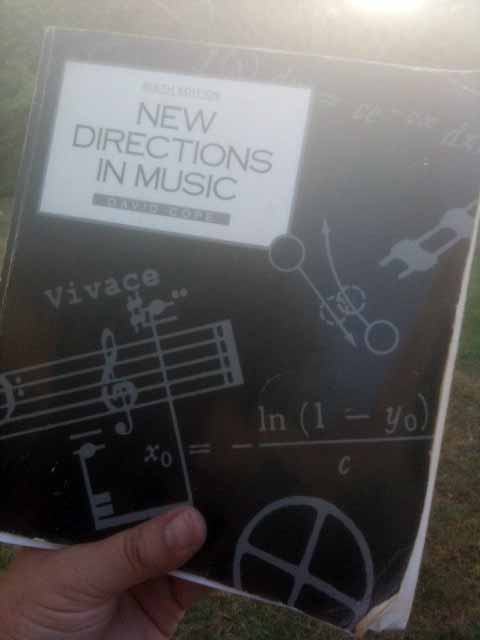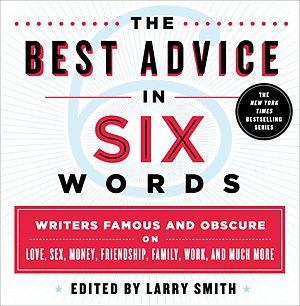 Cleaning out the garage, I stumbled into a hard copy of a term paper I wrote back in college. The class was 20th Century Music; the year was 1991. 20th Century Music was an area of study that focused on the experimental era in music, where composers intentionally broke classical rules to create something new. The results ranged from notable innovation to forgettable noise.
Cleaning out the garage, I stumbled into a hard copy of a term paper I wrote back in college. The class was 20th Century Music; the year was 1991. 20th Century Music was an area of study that focused on the experimental era in music, where composers intentionally broke classical rules to create something new. The results ranged from notable innovation to forgettable noise.
It’s a bit surreal to read this with 21 years of distance. That’s half my life ago. What I see here is an energetic young writer who has lots to say, but hasn’t quite put his finger on exactly what it is yet. He also has an apparent affinity for logical arguments, which is probably why he spent the last half of the nineties at a chessboard.
Before it’s filed away into a box to never be found again, here it is for permanent record:
Is 20th Century Music Art?
Terms according to Webster:
art (art) n. 1. The activity of using imagination and skill to create beautiful things.
imagination (i-maj’-e-na-shun) n. 1. The mental power of forming images of unreal or absent events. 2. Such power used creatively.
skill (skil) n. 1. Proficiency or ability; expertise. 2. An art, trade, or technique, esp. one requiring use of the hands or body.
beauty (byoo’-tee) n. 1. A quality or combination of qualities that delights the senses or appeals to the mind
An argument or debate typically occurs when two or more people have conflicting views on an arguable or debatable topic. Each opposing side tries to persuade the other by offering reasonable and logical evidence which supports their view. However, many arguments never get anywhere due not solely to conflicting views, but to conflicting definitions of terms used to support those views.
Debates require a mutual understanding from each side, otherwise they are a complete waste of time. Many times it is not a matter of one person being right and the other wrong, but merely two people with different ideas of what the premise of the argument actually is. The result is a pointless battle of vocal cords that goes in circles.
Let me give an example. Let’s say that two people are arguing about whether or not Wolfman by Robert Ashley is art. For the debate to get anywhere, the two sides must come to a mutual agreement on what the definition of ‘art’ is. One may reason that “Art is the creation of something beautiful, and this sure as hell ain’t beautiful”, while the other may reason that “Art is the use of imagination to create something unique, and this is definitely unique.” Now, if we consider how each person came to his conclusion as to whether or not Wolfman is art, we can see that the actual argument lies in the definition of ‘art’, and not necessarily in Wolfman itself. Based on their own individual definitions of ‘art’, neither person is necessarily wrong in their conclusion.
Webster defines art as “The activity of using imagination and skill to create beautiful things.” Now, if we take this definition as gospel, we will still be arguing with each other, because we are then faced with another vague term, ‘beauty’. While some may use Webster’s definition of art to reason that “Wolfman is not art because it sounds it is not beautiful”, others will say that it “is art because it took imagination, and the power of imagination is beautiful.” Now we’re down to the whole ‘beauty is in the eye of the beholder’ thing.
Another term used in Webster’s definition of ‘art’ is ‘skill’. I personally have a problem with this, because there are many 20th Century compositions that I see no demonstrated “skill” per se. For instance, neither Celestial Music for Imaginary Trumpets by Tom Johnson nor 4’33” by John Cage involve skill. Imagination, yes, but not skill as defined by Webster.
To avoid any further misunderstandings of the term ‘art’, I would like to reword Webster’s definition and clear up some of the vagueness. I offer:
art: The result of using imagination and/or skill to create things which can be perceived as beautiful.
I will use this definition of ‘art’ as a basis for my reasoning for all of the 20th Century music pieces I touch on in this paper.
First of all, I would like to acknowledge the undeniable talent of composers such as Schoenberg, Debussey, Berg, Webern, Bartok, and Ravel who explored and pioneered concepts like tonality, pointillism, and tertian harmony. Just looking at the matrix establishes these composers as incredibly skilled artists. I don’t see a lot of debate as to whether or not their music is art. I think the purpose of this paper is to explore the more “out there” guys whose artistic credibility is so often debatable.
Kryzsztof Penderecki: Threnody for the Victims of Hiroshima
This was one of the first 20th Century pieces I was exposed to. If one would simply walk into a room and hear this playing on the stereo, they’d probably either leave or try to fix the stereo. This piece has a lot of meaning, and was composed with a purpose: To give an aural illustration of a million deaths. It succeeds in its quest, and I see it as a beautiful portrayal of a hideous event. It is, however, necessary for the listener to be aware of Penderecki’s intentions before hearing it.
George Antheil: Ballet mecaniqueThis is the epitome of noise pieces that I heard in class. I see this piece as a very dated, personal expression that was influenced by the depression and dark events of the 1920s. At that time, this composition illustrated the anger and frustration that Antheil and others shared, and was very much inspired by war themes like airplane engines. George Antheil was a disturbed individual who once silenced an audience during a piano recital by drawing a pistol. I’m not saying I wouldn’t have done the same thing. Ballet mecanique captured the vibe of the world at that time.
This is like listening to a bunch of people with allergy problems walking through a meadow in the spring. I like the fact that it marks a milestone in vocal experimentation, but it is very annoying for me to listen to. But that’s just me. I see it as an experiment, with no real purpose other than to see how many different sounds you can achieve with voice. And if that’s what Ligeti was trying for, he succeeded. It contains imagination and requires skilled performers, so yes, it’s art. But according to my definition of art, you don’t necessarily have to like it.
Let’s discuss indeterminacy
Before I touch on some of the composers who explore indeterminate concepts, I must say that this is probably the musical concept I have most trouble appreciating. The whole world contains indeterminate elements, and I do not need another human being to “create” a piece that is indeterminate. In fact, I think it’s impossible to create something that’s totally indeterminate. If I want indeterminacy, I can go listen to cars at the street corner or watch waves at the beach. I find it somewhat asinine how some guys can take credit for the “creation” of something that has no artistic relevance. How can you take credit for something you have no control over? I really find it hard to praise an “artist” for creating something that a toddler or a monkey could have created. If I take a plate of spaghetti and throw it against the wall, is it art? Do I deserve to call myself an artist? It’s scary to think that some people would answer “yes”. You may disagree with me, but I believe that art requires some element of human skill to deserve credit. Without skill, the physical human element is abandoned, and therefore is nothing more than conceptual art. But we’ll get into that later.
This piece is stimulating to me because it seems to contradict itself; it’s a musical paradox. Duckworth attempts to achieve indeterminacy through the use of a rigid structure. Disorder through order, if you will. It’s as if the musician is to follow a set of rules, but ignore what he’s doing. This is kind of a twelve-tone meets indeterminacy piece. I admit it’s interesting.
I have to hand it to Mizelle for creating a piece that appeals to the stoner in all of us. Performances of this piece may last over 382 years, and I love the part about how the area of performance could be expanded “to other planets, galaxies, etc. When all of time and space are transformed into sound, the piece — and the universe — ends.” Whoah, dude, that’s pretty heavy. Throw me the lighter.
Barney Childs: The Roachville Project
I love this piece. To me it epitomizes everything I hate about 20th Century music. It is based on performer improvisation, and would be a trip to perform. But composition-wise, to me, it serves as a perfect example of how you can take a load of crap, color it with lots of flowery wording, and make it appear to be worth something. I was so inspired by The Roachville Project that I found the energy to realize and compose my own piece that defines what I think of its own source of inspiration.This is the king of experimentation at his finest. Cage was the godfather of experimental music as I see it, and something tells me he probably experimented with other various substances as well. This piece was a result of Cage’s ongoing conscious effort to divorce himself from the process of creative control over the elements of his work. Cartridge Music is experimental in concept, indeterminate by nature, and unforeseen in outcome. I will not attempt to analyze this piece because, as John Cage said, “What you have to develop is an indifference to whether your work is effective or ineffective; let happen what will.” So I choose to look at this piece as Cage himself looked at it. Don’t.
I think the term “Danger Music” overlaps into conceptualism, because most of the “Danger” compositions are only conceptual and never fully realized. I see guys like Daniel Lentz, Nam Jun Paik, and Robert Ashley as conceptualists with twisted concepts.
John Cage: 4’33”This was a ground-breaking “piece” that was more important in concept than in content. It was another point that John Cage had to make. I hear him.
Tom Johnson: Celestial Music for Imaginary Trumpets
This piece is extraordinary. Just look at it. A fortissimo symbol cleverly situated under an exquisitely positioned treble clef nestled beneath such ever-ascending and symmetrically spaced ledger lines, like a golden stairway to Heaven, leading to a quintuplet of whole notes that spell pure bliss. And for the icing on the cake, a fermata.
Pauline Oliveros: Sonic Meditation XIII
This is great. Lie on your back. Shut up. Trip out for a while. Then tell me what you heard. The other Sonic Meditations are just as good.
I like the sound of whales. They’re naturally soothing. You get the feeling that something is being communicated. However, Crumb didn’t compose this piece. He discovered this piece.
Allen Strange: No Dead Horses on the Moon
How could anyone not like this. It’s total entertainment. I analyzed the diagram for projector positioning, and for some reason it made sense. Projectors 1 and 2 pointed parallel at an angle to their right, 3 and 4 at a wider angle with 3 down the center of the room, 5 and 6 each pointing to opposite corners, and 7 down the middle of the room parallel to 3. I wonder what it felt like? That would be warped.
I love anything Merrill Ellis did.
Inhale helium and read Lincoln’s Gettysburg Address. I’ve done that! Except it was the opening warning on the People’s Court, “What you are about to see is real. The participants are not actors…”
Vladimir Ussachevsky: Sonic Contours
This piece has a mesmerizing lullaby feel to me. I like the way all these electronic music guys like Subotnick and Luening title their compositions so aptly.
Edgar Varese: Poeme electronique
This is highly organized sound, and I enjoy listening to highly organized sound. I also like the effective blend of musique concrete and electronically generated sounds.










